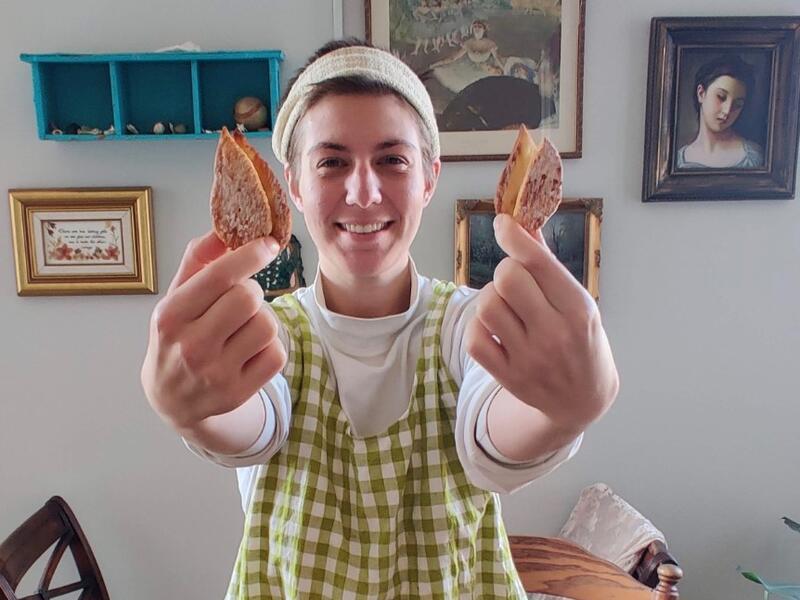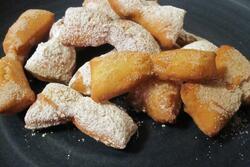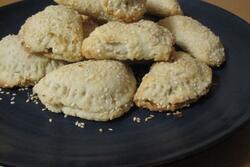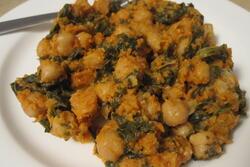This Purim, Make Foods That Celebrate Your Unique Cultural Heritage
When I learned that Purim and St. Patrick’s Day were on the same day this year, I immediately began to brainstorm the kinds of food I could make to celebrate the holidays together. Although I was raised Jewish, my father comes from an Irish Catholic family, and St. Patrick’s Day has always been a big food holiday for my family.
Despite having very different religious and cultural backgrounds, Purim and St. Patrick’s Day evoke similar feelings of celebration. Both signify a moment of triumph, and both are celebrated (at least in the United States) with food, drinks, costumes, and good cheer.
When I’m visiting my dad at home, he usually makes a big pot of Irish stew for St. Patrick’s Day, and my sister or I make soda bread. This year, I’ll be celebrating the holidays away from home and cooking a big meal for a group of friends. I decided I would try to create a meal to celebrate both Purim and St. Patrick’s Day.
For Purim, the most popular food eaten in America is hamantaschen. The triangle-shaped cookies are meant to look like the ears of Haman, the advisor to the King who tried to kill the Jews of Persia. Esther and Mordecai defeated Haman, and to celebrate we eat triangle-shaped foods to remind us of our ancestors’ victory.
For St. Patrick’s Day, Irish Americans eat corned beef and cabbage, a dish that was created not in Ireland, but in New York City, during the first major wave of Irish immigration. While researching foods I might cook, I discovered something that made me kvell: The corned beef we know today has Jewish roots! The term was coined in the seventeenth century to refer to something quite different—salted bacon or lamb, since most Irish people couldn’t afford beef. (The salting of meat was a popular way to preserve food in the days before refrigerators.)
Like Jews and many other groups, the Irish immigrated to the United States at the end of the nineteenth century in search of opportunity and stability they often could not find back home. Jewish and Irish immigrants became allies in the neighborhoods of New York City, where the Irish usually found themselves purchasing meat from kosher butchers. That’s when modern-day corned beef was born—the practice of salting and slow-cooking brisket, common among Jews, reminded Irish Americans of the dish they’d made back home.
The newfangled corned beef was combined with potatoes and cabbage to create a new dish that many Irish Americans now eat on St. Patrick’s day to celebrate their Irish (and immigrant) heritage. The dish is evidence of how foods often interact with, influence, and adapt to the cultures they meet in diaspora.
I’ve never been a big corned beef fan, so despite the interesting Jewish-Irish connection, I probably won’t be making it for Purim/St. Patrick’s Day. There are, however, a number of other dishes that invoke a similar connection between Jewish and non-Jewish cultures. I’ve collected a few links to recipes that I think are worth trying—maybe you’ll find a mix of cultures that resonates with you and your own heritage.
Of course, there’s really no such thing as “Jewish food,” because Jewish food is anything Jews eat. Jewish and eating a PB & J sandwich? Bam, that’s Jewish food. That said, two things that connect many of the foods Jews eat are kashrut and holidays. What we often think of as Jewish foods are dishes commonly eaten around specific holidays like Rosh Hashanah, Pesach, Purim, and Shabbat. Dishes like latkes, brisket, and kugel tend to dominate media representation—but those meals only represent a small, mostly Ashkenazi, portion of the foods Jews from around the world eat at holidays.
Purim offers some consistency across cultures, with Jews around the world eating triangle-shaped foods to celebrate the Jews’ triumph over the evil Haman. Sephardic Jews for example, make fazuelos, or orecchie di Amon (“Haman’s ears”), small strips of dough that are folded, fried, and powdered. The dish resembles, and was likely influenced by, pestiños, a dish from from al-Andalus, which was the Muslim-ruled part of the Iberian Peninsula. This recipe is a good example.
Italy has a slightly different version of orecchie di Amon, called chiacchiere, which doubles as a food Catholic Italians eat at Carnival. The holiday of Carnival is a festival that takes place just before the Catholic celebration of Lent, usually in February—around the same time as Purim. In the Middle Ages, the jubilant celebration of Purim likely influenced the masquerade elements of Carnival, particularly in places like Italy and Spain. Consisting of thin pieces of fried dough folded into a triangle shape, chiacchiere are another example of cultural fusion.
Haman’s ears are not the only symbol that ties together Purim foods from around the world. According to Midrash, in order to adhere to the laws of kashrut, Queen Esther stuck to a vegetarian diet while she was in the King’s palace, mostly eating seeds and legumes. That’s why many Purim foods incorporate foods like poppy seeds, dates, and beans. In Turkey, chickpeas are a popular Purim food, and this recipe incorporates a tomato sauce frequently consumed by Turkish Jews.
Other dishes combine legumes and the symbol of Haman’s ears to create unique Purim foods. Sambusak are turnovers filled with anything from cheese to meat to chickpeas. They’re very similar to Indian samosas and are popular among Persian and Iraqi Jews. Another popular Iraqi dish at Purim is hadgi badah, a cardamom cookie topped with almonds. You can find recipes for both of these on JWA's website.
What I love most about cooking is that there’s always room to introduce new traditions and ingredients to your meals and to make dishes your own. In that spirit, on March 17, I’ll be making my dad’s Irish stew, substituting kreplach for the usual chunks of beef. A friend who will be joining me is Argentinian and Jewish, and has promised to bring empanadas, triangle-shaped pastries popular in South America.
I encourage you to lean into your own cultural heritage this Purim. Celebrating your own unique Jewish identity is an essential part of the holiday—as is eating, of course!
Chag Purim Sameach and Lá Fhéile Pádraig sona duit!








Great article! I learned so much.